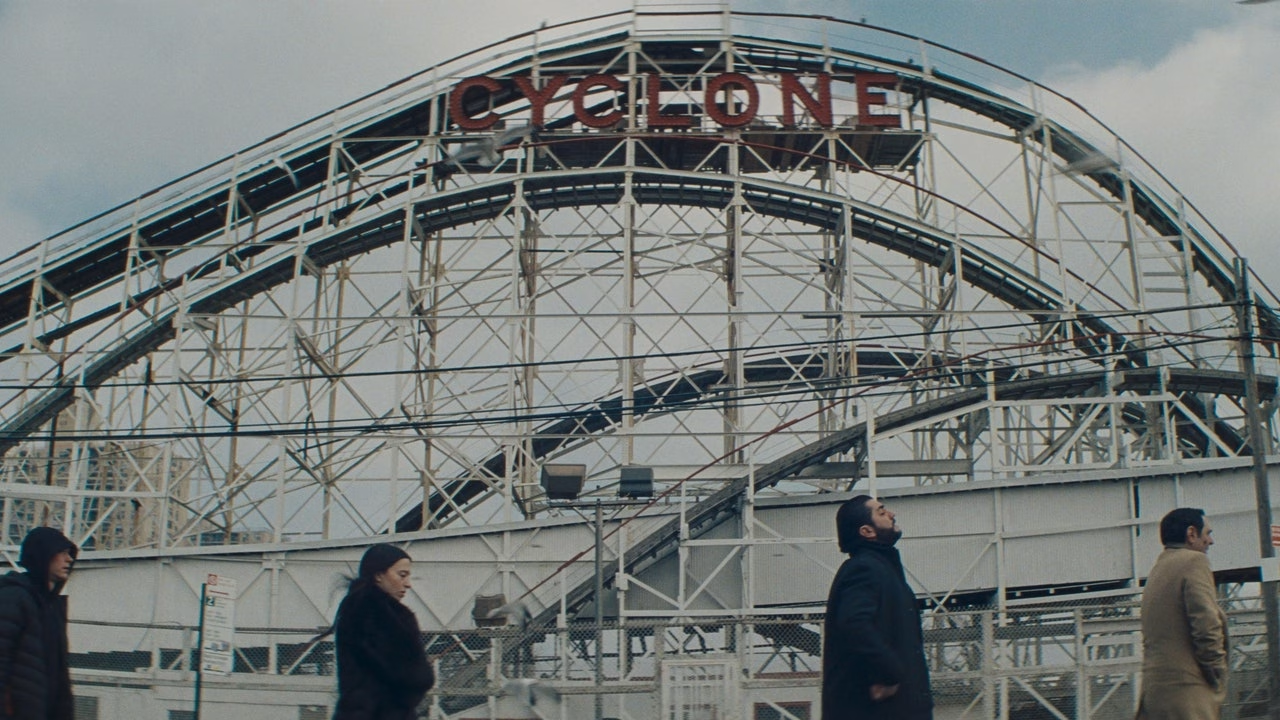After Ivan’s family finds out that he’s hastily married Ani, handlers arrive at his mansion to force the couple into an annulment. This gets more com
After Ivan’s family finds out that he’s hastily married Ani, handlers arrive at his mansion to force the couple into an annulment. This gets more complicated when Ivan runs away—leaving Ani to fight off the henchmen. When she proves tougher than she looks, they tie her up, leading to this moment where she’s considering her options.
Sean Baker: We were trying to take advantage of the framing, using the really special characteristics that a vintage anamorphic lens brings to the table when it comes to some of these close-ups.
We leaned into the full color palette, the rainbow spectrum. Knowing that it was going to take place in the winter, in New York City, we were expecting a gray overcast, and that’s essentially what we got for most of the shooting days. It was more about focusing on individual colors, red and blue being the two primary ones, and working with Stephen Phelps, our production designer, on how to place that color in almost every frame.
Drew Daniels: Even in this frame, I can see the little hint of color coming from her hair—even if it’s just a close up of someone’s face like this, to have a little hint of color and feel a little bit more like there’s some personality behind it.
This shot felt straight out of one of those Italian films from the ’70s. If you think of even Sergio Leone, this is a Western shot. To me, it’s also a really subjective shot. We’ve just been watching her go through all this hell, and then we get this really extreme close moment of her contemplating her next move. The shot tilts down to her mouth, and I just love how intimate it is. We always talk about American ’70s cinema when we’re talking about Anora, but this feels like more of a spaghetti western or Giallo vibe. A close-up of a character’s eyes is not something that every movie does or feels like it has permission to do.
Baker: Subtextually, this character is not being heard. She’s being silenced, literally; she’s being gagged. So all of the communication has to come from her eyes. The audience wants to know what she’s thinking. We don’t have narration. We don’t hear her inner thoughts. We are trying to understand how she’s processing the moment through her eyes, and we’re also trying to detect what her next move is. Does she tell the truth? Does she bluff? That’s actually left up for interpretation.
The Car

COMMENTS